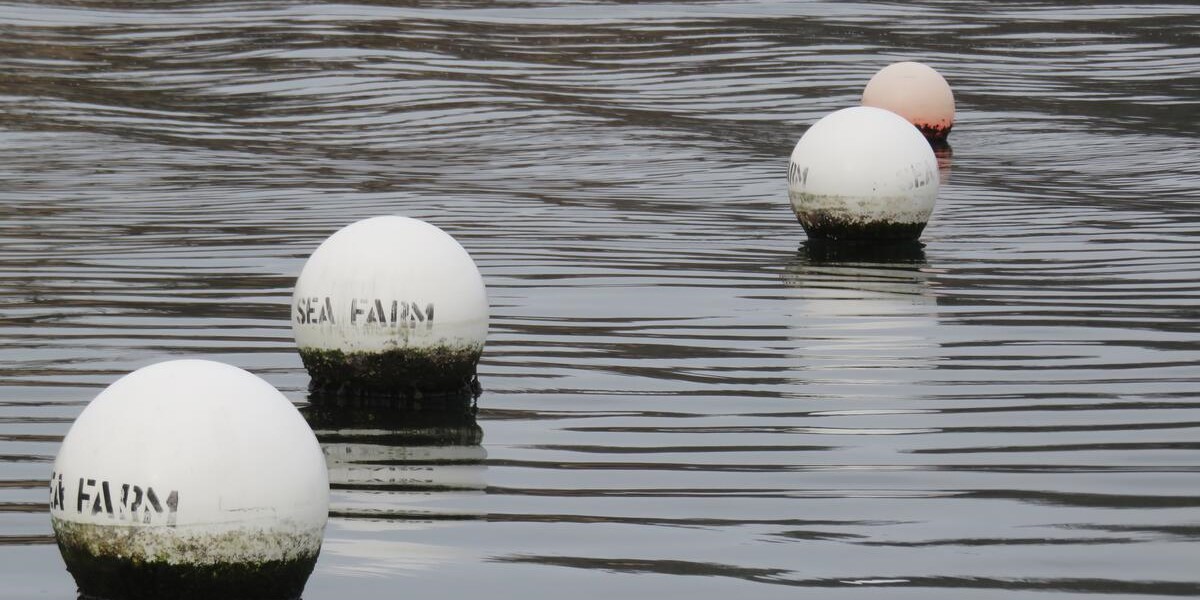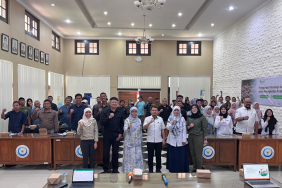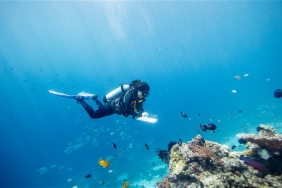EAST FLORES POLE AND LINE TRAINEES CALL FOR IMPROVED FISHERIES PRACTICES
By Muhammad Maskur Tamanyira and Saraswati Adityarini - Capture Fisheries Program
As soon as Ir. Erna da Silva entered the room, forty captains of pole and line and buoy vessels along with representatives from the East Flores Regency Marine and Fisheries Service (DKP) immediately prepared for the training in Larantuka on August 19, 2015. That day, they were given a deep dive into the Better Management Practices (BMP) of Pole and Line - a fishing method using a rod and hookless (barb-less) fishing line with the characteristic use of live bait and water sprayers as attractors. The target catch of Pole and Line is skipjack and mackerel.
This training is a continuation of the public consultation on the preparation of "Pole and Line BMP" in November 2014. After a briefing from the Head of East Flores DKP, the BMP material was presented in stages. Participants were given an understanding of the background to the development of the Pole and Line BMP, the importance of equipment and administration, live bait handling, post-catch handling, and conservation materials.
There are several emphases in this training. First, the importance of completing administrative files before leaving for operations to avoid administrative obstacles that hinder the process of landing catches. Second, related to the crucial issue in East Flores which is bait fish and its handling. The discussion heated up when Hilmar - representing the skipjack fishing industry (PT. Okishin) - said that fishermen actually understand and know how to handle bait well. Unfortunately, this knowledge has not been practiced thoroughly. Many pole and line fishermen take bait to the "dry shovel" when the price is cheap, but the handling is not good and most of the bait dies.
The last material of the training was the practice of filling in the log book. Every fishing fleet above five gross tonnage (GT) is required to fill out a fishing log book in accordance with KP Regulation No. 48 of 2014 concerning Fishing Log Book. The pole and line fleet in East Flores, which is dominated by vessels measuring 6-15 GT, falls into this classification. Logbook recording will provide transparent information on fisheries production per fleet according to fishing gear, fishing location, fishing duration, license used and fleet identity. The data collected is useful for developing fisheries management strategies and minimizing the activities of irresponsible fisheries practices (Illegal, Unregulated, and Unreported Fishing).
To measure the effectiveness of the training, a post-test was conducted before the closing of the training. The average understanding of participants rose to 63.96% or an increase of 8.12% from the pre-test result of 55.85%. Participants who had a better understanding then agreed to carry out a collective agreement to improve fisheries practices - especially in bait handling and logbook recording - in accordance with BMPs.
This decision was then signed by representatives of East Flores DKP, the company, and the East Flores pole and line fishermen. WWF-Indonesia, DKP East Flores, and related parties, will assist the implementation. This assistance will be focused on the industry level and then technical guidelines will be prepared for implementation by DKP at the fishermen level.
With this training and agreement, it is expected that the best Pole and Line practice can be implemented by both plasma/company fishermen, as well as devoted fishermen who get a fleet of assistance from DKP East Flores.





